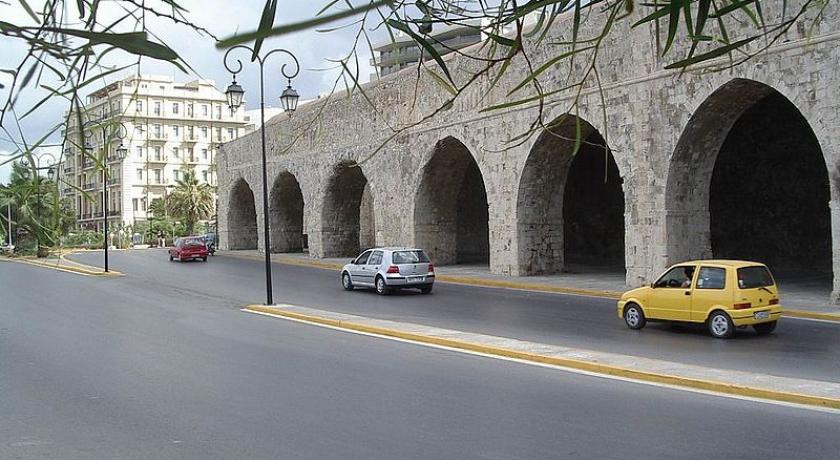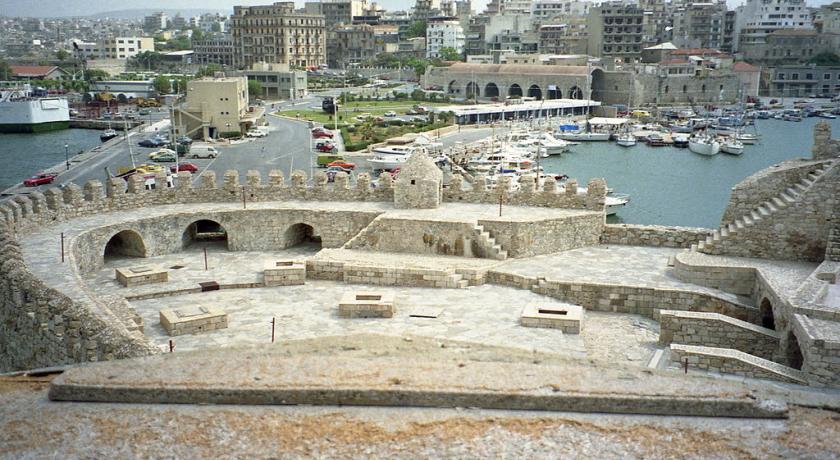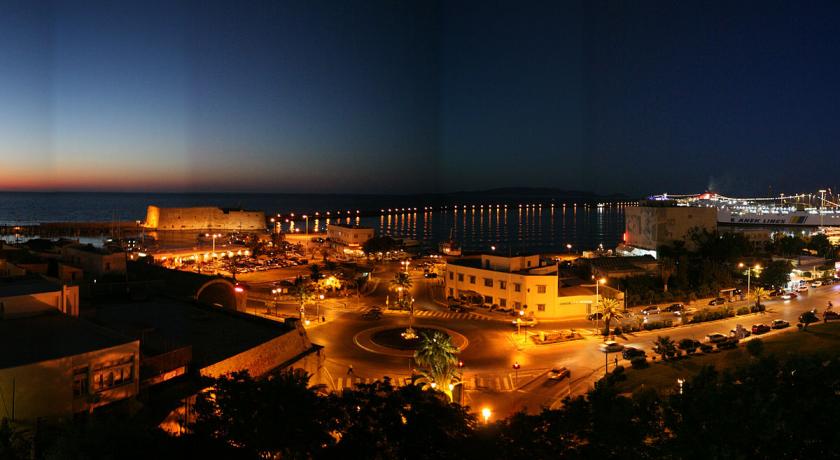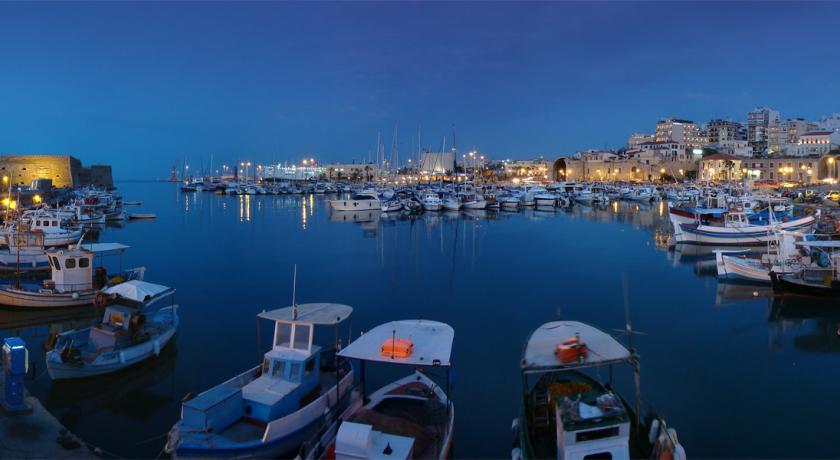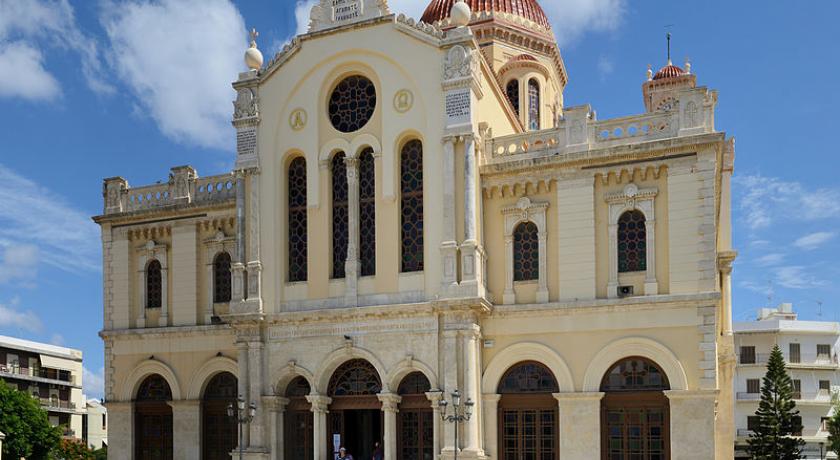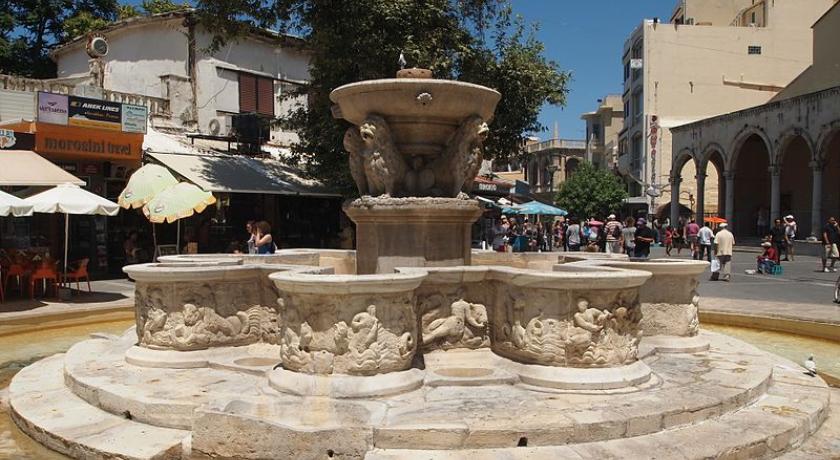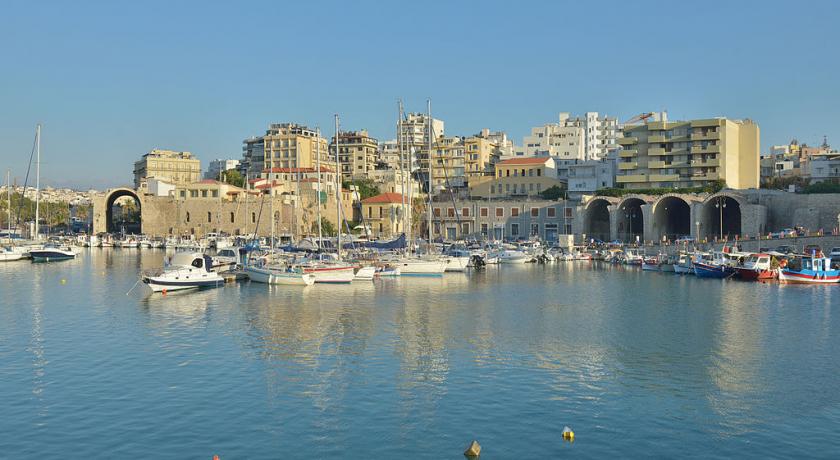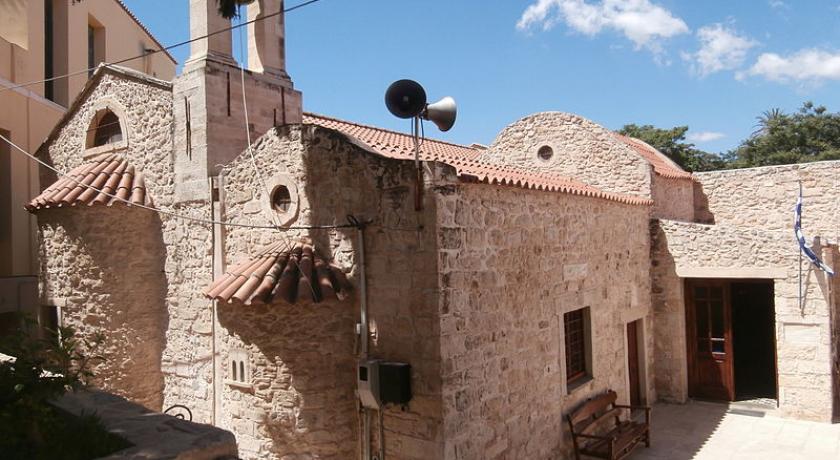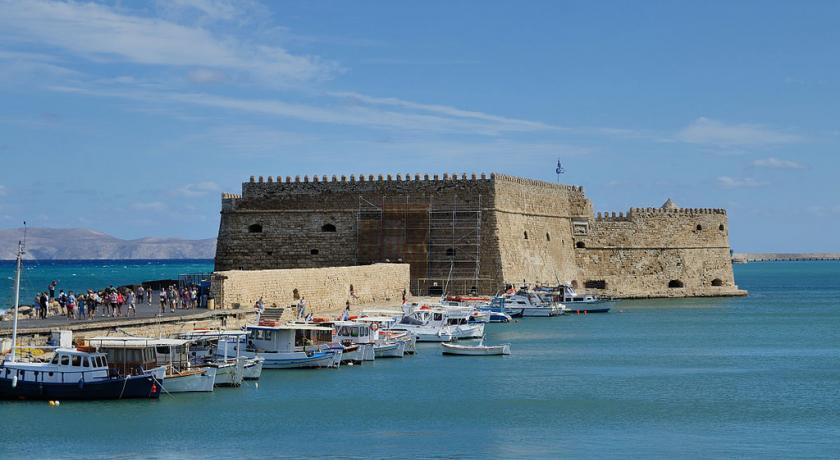Description
Heraklion is the largest city and the administrative capital of the island of Crete. It is the fourth largest city in Greece. According to the results of the 2011 census, the population of the city proper was 140,730 inhabitants, the municipality's was 173,993 while the Heraklion urban area has a population of 225,574 and it extends over an area of 684.3 km2 (264.2 sq mi).
Heraklion is the capital of Heraklion regional unit.
The Bronze Age palace of Knossos, also known as the Palace of Minos, is located nearby.
Culture
Museums
- Heraklion Archaeological Museum
- Cretaquarium
- Historical Museum of Crete
- Natural History Museum
- The Battle of Crete and National Resistance Museum
- Nikos Kazantzakis Museum
- Lychnostatis Open Air Museum
- Collection of Agia Aikaterini of Sinai
- Museum of Visual Arts
Architecture and urban sculpture
At the port of the city dominate the Venetian constructions, such as the Koules Fortress (Rocca al Mare), the ramparts and the arsenal.
Around the city can be found several sculptures, statues and busts commemorating significant events and figures of the city's and island's history, like El Greco, Vitsentzos Kornaros, Nikos Kazantzakis and Eleftherios Venizelos.
Also, many fountains of the Venetian-era are preserved, such as the Bembo fountain, the Priuli fountain, Palmeti fountain, Sagredo fountain and Morosini fountain (in Lions Square).
Transportation
Port
Heraklion is an important shipping port and ferry dock. Travellers can take ferries and boats from Heraklion to destinations including Santorini, Ios Island, Paros, Mykonos, and Rhodes. There are also several daily ferries to Piraeus, the port of Athens in mainland Greece.
Airport
Heraklion International Airport, or Nikos Kazantzakis Airport is located about 5 kilometres (3 miles) east of the city. The airport is named after Heraklion native Nikos Kazantzakis, a writer and philosopher. It is the second busiest airport of Greece, because of Crete being a major holiday destination.
The airfield is shared with the 126 Combat Group of the Hellenic Air Force.
Highway network
European route E75 runs through the city and connects Heraklion with the three other major cities of Crete: Agios Nikolaos, Chania, and Rethymno.
Public transit
There are a number of buses serving the city (more information visit) and connecting it to many major destinations in Crete.
Railway
From 1922 to 1937, there was a working industrial railway, which connected the Koules in Heraklion to Xiropotamos, for the construction of the harbor.
A study from the year 2000 investigated the feasibility for two tram lines in Heraklion. The first line would link the Stadium to the airport, and the second the center of Heraklion and Knossos. No approval has yet been given for this proposal.
In the summer of 2007, at the Congress of Cretan emigrants, held in Heraklion, two qualified engineers, George Nathenas (from Gonies, Malevizi Province) and Vassilis Economopoulos, recommended the development of a railway line in Crete, linking Chania, Rethymnon and Heraklion, with a total journey time of 50 minutes (30 minutes between Heraklion and Rethymnon, 20 minutes from Chania to Rethymnon) and with provision for extensions to Kissamos, Kastelli Pediados (for the planned new airport), and Aghios Nikolaos. No plans exist for implementing this idea.
History
Heraklion is close to the ruins of the palace of Knossos, which in Minoan times was the largest centre of population on Crete. Though there is no archaeological evidence of it, Knossos might well have had a port at the site of Heraklion as early as 2000 BC.
Founding
Emirate of Crete
The present city of Heraklion was founded in 824 by the Muslims under Abu Hafs Umar who had been expelled from Al-Andalus by Emir Al-Hakam I and had taken over the island from the Eastern Roman Empire. They built a moat around the city for protection, and named the city ž▒ž©žČ ž¦┘äž«┘åž»┘é, rabßĖŹ al-ßĖ½andaq ("Castle of the Moat"). It became the capital of the Emirate of Crete (ca. 827–961). The Saracens allowed the port to be used as a safe haven for pirates who operated against Imperial (Byzantine) shipping and raided Imperial territory around the Aegean.
Byzantine era
In 961, Byzantine forces under the command of Nikephoros Phokas, later to become Emperor, landed in Crete and attacked the city. After a prolonged siege, the city fell. The Saracen inhabitants were slaughtered, the city looted and burned to the ground. Soon rebuilt, the town was renamed Χ╬¼νδαξ, Chandax, and remained under Greek control for the next 243 years.
Venetian era
In 1204, the city was bought by the Republic of Venice as part of a complicated political deal which involved, among other things, the Crusaders of the Fourth Crusade restoring the deposed Eastern Roman Emperor Isaac II Angelus to his throne. The Venetians improved on the ditch of the city by building enormous fortifications, most of which are still in place, including a giant wall, in places up to 40 m thick, with 7 bastions, and a fortress in the harbour. Chandax was renamed Candia and became the seat of the Duke of Candia, and the Venetian administrative district of Crete became known as "regno di Candia" (kingdom of Candia). The city retained the name of Candia for centuries and the same name was often used to refer to the whole island of Crete as well. To secure their rule, Venetians began in 1212 to settle families from Venice on Crete. The coexistence of two different cultures and the stimulus of Italian Renaissance led to a flourishing of letters and the arts in Candia and Crete in general, that is today known as the Cretan Renaissance.
Ottoman era
After the Venetians came the Ottoman Empire. During the Cretan War (1645–1669), the Ottomans besieged the city for 21 years, from 1648 to 1669, perhaps the longest siege in history. In its final phase, which lasted for 22 months, 70,000 Turks, 38,000 Cretans and slaves and 29,088 of the city's Christian defenders perished. The Ottoman army under an Albaniangrand vizier, Köprülü Faz─▒l Ahmed Pasha conquered the city in 1669. Under the Ottomans, the city was known officially as Kandiye (again also applied to the whole island of Crete) but informally in Greek as Megalo Castro (Μεγ╬¼λο Κ╬¼στρο; "Big Castle"). During the Ottoman period, the harbour silted up, so most shipping shifted to Chania in the west of the island.
Modern era
In 1898, the autonomous Cretan State was created, under Ottoman suzerainty, with Prince George of Greece as its High Commissioner and under international supervision. During the period of direct occupation of the island by the Great Powers (1898–1908), Candia was part of the British zone. At this time, the city was renamed "Heraklion", after the Roman port of Heracleum ("Heracles' city"), whose exact location is unknown.
In 1913, with the rest of Crete, Heraklion was incorporated into the Kingdom of Greece. Heraklion became capital of Crete in 1971, replacing Chania.
source https://en.wikipedia.org/wiki/Heraklion
Address
Heraklion
Greece
Lat: 35.338733673 - Lng: 25.144212723


